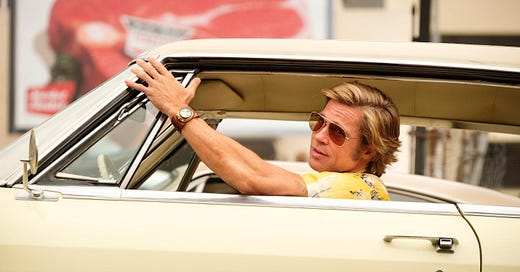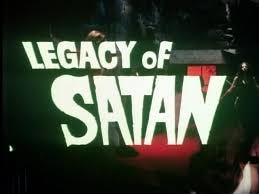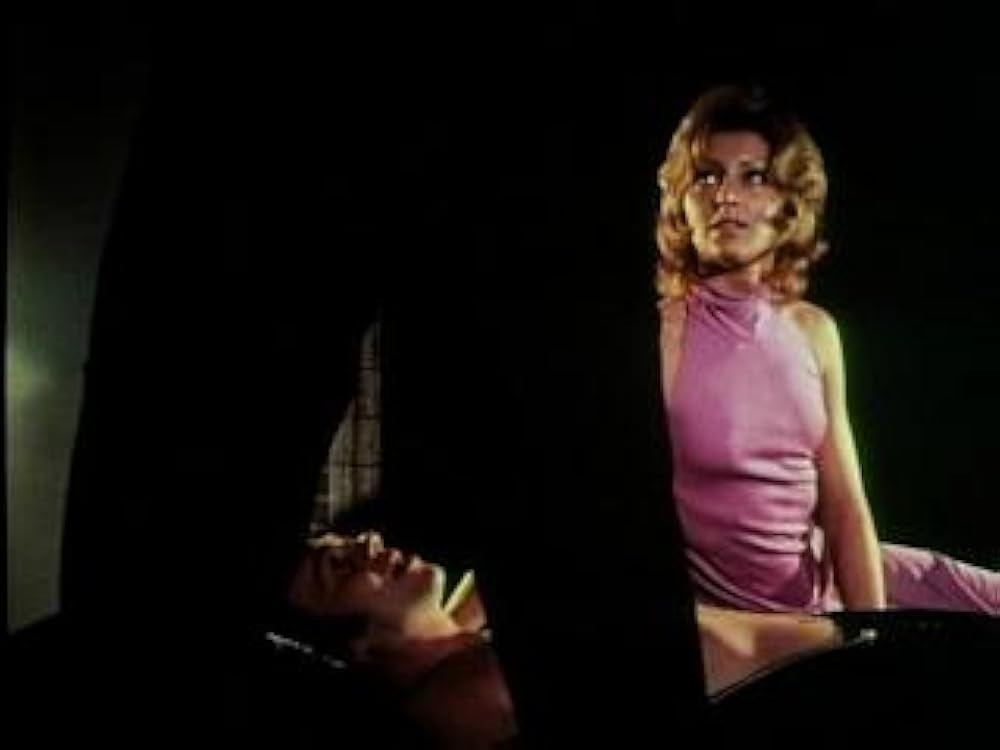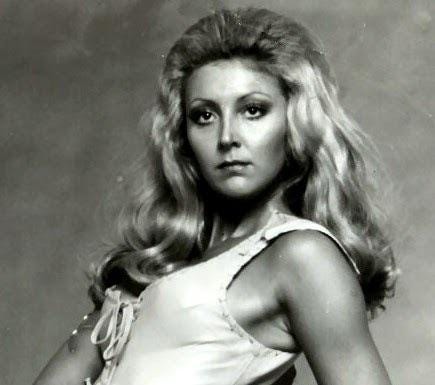The Movie Critic Will Be About The Murder of Christa Helm* **
*And the Murder of Sal Mineo **Probably
Sean Fennessey recently compared The Movie Critic to Farewell, My Lovely, a sequel of sorts to Howard Hawks’s The Big Sleep. It is a sequel not in plot, but in character, tone, and terrain. That in mind, I looked up true crime stories that take place the same year as the known setting of The Movie Critic, Los Angeles in 1977. One crime notably stands out and is the only thing that makes logical sense as its premise: the murder of Christa Helm.
The Setting
1977 marks a hinge point. The tail end of the New Hollywood revolution. The moment when the postmodern 'high-brow meets low-brow' grit of the Movie Brats gives rise to the Summer Blockbuster. And in the middle of it all: porn. The kind with glamorous red carpet premieres and the respect of mainstream critics like Roger Ebert.
Tarantino's new film reportedly orbits a porn magazine journalist, a blonde female lead, and Cliff Booth. It bleeds into true crime, Hollywood arcana, and the darker margins of American cultural folklore. This is the seedy, seething Los Angeles that Tarantino knows best. It would work well as a career sendoff. It’s the version he cleaned up popcorn in at the Pussycat Theater, his first movie-adjacent job.
This is where Christa Helm comes in. An actress in the middle of the porn world as it intersects with New Hollywood. By the late 1970s, she’s running in social circles with the likes of call girls and Hollywood royalty. She is a known lover to icons like Mick Jagger, Warren Beatty, Joe Namath, and Roman Polanski. George Hamilton claimed he met Helm through Godfather producer Gray Frederickson. It is confirmed by Collider that Godfather actor Joe Spinell, who was married to pornstar Jean Jennings, is a character in the film. It’s all a bookend to the New Hollywood world set up in Once Upon a Time in Hollywood.
Tate and Helm
Both blonde. Both starlets. Both the subject of many a gossip column. Both stars of films featuring the occult and vampirism. Both girlfriends of Roman Polanski. Both killed in landmark years for New Hollywood.
As written about in Tom O’Neill’s Chaos, which is frequently brought up in Tarantino interviews, Polanski had disturbing sexual tapes of Sharon Tate that were covered up by the LAPD during their investigation into her murder. Helm allegedly carried a black book with information about her Hollywood sexual life. A columnist at the time wrote of Helm, "who she knew and how she knew them may be the reason her savage killing was barely reported." Helm had tapes as well, which were taken by former convict and Goodfellas/ Sopranos actor Tony Sirico at the time of her death.
The allegations about the disturbing sex tapes were not part of OUATIH, and though possibly implied, likely will not be an overt subject of its spiritual sequel. It it nonetheless an interesting connection.
The Sal Mineo Connection
And so it is in the streets of Hollywood, after attending a party in Laurel Canyon, that Christa Helm is murdered. Her death brings to mind the death of actor Sal Mineo, killed a year earlier, in the same neighborhood, in the same way. Mineo is written about at length on the New Beverly’s website. In the Tarantino universe, Mineo stars in The 14 Fists of McCluskey alongside Rick Dalton. Which means all of these people—Sal, Rick, Cliff—exist in the same conceptual cul-de-sac. Mineo and Helm’s murders are not only similar in setting, the same suspect is arrested for both crimes: Lionel Ray Williams. Williams, like Cliff Booth, is a resident of Van Nuys and maintains that he is not a murderer. Of note, a mysterious blonde white man was seen walking away from Mineo’s death. A yellow car was also of interest.
“The chief of police, Peter J. Pitchess at that time put out a statement, and gave the whole case over the TV,” said Williams.
“Everything that he wasn’t supposed to say, he said it. They made an announcement saying, ‘If anyone loaned anyone a small yellow car, please contact the Hollywood sheriff’s department.”’
“They kept asking me if I had a white friend – their main thing was who did I loan that small yellow car to.”
The ‘L.A. Porn Industry Thriller’ Subgenre
Tarantino is a fan of subgenres, and subverting them. The Los Angeles Porn Industry Thriller would be a natural fit. Tarantino is an enormous fan of Brian De Palma, and it is in this world that Body Double takes place. There are many rumored connections between The Movie Critic and the filmmaker Paul Schrader, whose Hardcore is also set in the “Porno Chic” era of LA. Tarantino is also a huge fan of Boogie Nights. He criticizes Paul Thomas Anderson for having Burt Reynolds play a fictionalized version of porn director Gerard Damiano rather than Damiano himself.
Damiano is a director with ties to organized crime, and his pornographic film The Devil in Miss Jones was the number seven top-grossing film of 1973 according to Variety. His film Deep Throat was seen by established names of the cultural zeitgeist. Bob Hope, Truman Capote, Johnny Carson, Frank Sinatra, Jack Nicholson, De Palma, and Spiro Agnew were all among its audience.
According to the OUATIH novelization, Dalton is a frequent guest on Carson after torching the Manson family. His temporary neighbors, Sharon Tate and Roman Polanski, have connections to Sinatra and Nicholson as well. It is natural to assume that Damiano would be at the same Hollywood parties as Dalton.
The Fictional Critic
The titular movie critic is based on two real writers: Jim Sheldon and Bill Margold. Margold wears many hats in the rising porn industry, including starring in porn himself. In 1975, one such job was coordinating Damiano's five-day L.A. promo tour for The Story of Joanna. In the year prior, Christa Helm starred in the Damiano horror film Legacy of Satan, which was released as a double feature with Texas Chainsaw Massacre, another major influence on Tarantino.
What is considered a part of the porn industry and what is considered a part of Hollywood is increasingly blurred at this time. Legacy of Satan is grindhouse exploitation, but it is noteworthy that it is not considered pornographic. Helm had flings with Desi Arnaz Jr. and the Shah of Iran written about in tabloids. She had acting roles in Starsky and Hutch and in Wonder Woman. Margold, Dalton, Booth, Damiano, Polanski, Nicholson, Helm, the cast and crew of The Godfather—they all co-exist in the same working and social scenes.
About Taxi Driver, The Searchers, and Tarantino
The fictional version of Margold is said to be inspired by Travis Bickle. Tarantino time and time again takes the story of Taxi Driver and overlays the tropes of genre atop its theme.
This is an aside—you can skip all this. To understand Tarantino is to understand Taxi Driver. To understand Taxi Driver is to understand The Searchers.
Real quick. These films induce moral conflict in the viewer. In The Searchers, Ethan Edwards, played by John Wayne, is the Western archetype of bravery. In Taxi Driver, Travis Bickle is a very lonely man in New York City. Both characters have qualities which audiences find compelling in a protagonist, albeit for different reasons. Also both characters are racist, paranoid, vengeful, violent hypocrites. So is America. In Taxi Driver, Bickle murders criminals instead of assassinating a politician, ultimately saving a 12-year-old from prostitution. This is an undeniably good outcome, despite his disturbing motivations and inner thoughts. His actions are revered by the public because he imposes his sadism onto those that any rational member of society would deem deplorable. He avoids becoming a Lee Harvey Oswald-type figure because his targets are mafiosos and child sex traffickers.
Both films question how we define heroism and whether a good act redeems a bad man. Scorsese in particular subverts the fascist vernacular of cinema and of the American audience, and challenges viewers to reflect on their own judgments and emotions.
In Inglourious Basterds, we erupt into cheers as Nazis are gunned down in a flaming movie theater. The soldiers being shredded by bullets had, moments earlier, applauded Nazi propaganda glorifying the murder of Jews. Some miss the irony. We, justifiably, already have an association with Nazis as the evil of all evils, and so Tarantino has free reign to do anything he wants. Take the Bear Jew. The Bear Jew goes Teddy Ballgame on a Nazi’s ass. And, the guy’s a Nazi, so fuck him, we love it. We love the violence. It’s generationally cathartic, and, frankly, it’s hilarious. He beats him with a baseball bat. What could be more American?
This cathartic violence is used in Django Unchained against slave owners. For Once Upon a Time in Hollywood it’s the Manson family.
We are introduced to an overtly racist and sexist Rick Dalton. He is a bastion of the type of white male sold to America in the 1950s. We see him drive around Los Angeles clamoring on about “dirty fuckin’ hippies,” and “goddamn Italian movies,” like Benedict Canyon’s friendly neighborhood Travis Bickle. But we cheer when he torches a hippie. We also cheer when Cliff brutally beats them. We’re ready to embrace the beatdown that the racist and the (probable) wife killer give the hippies. We know the larger context, the hippies are going to kill a pregnant woman and her unborn child if Cliff and Rick don’t stop them. And so to any rational audience member, the hippies dying is great. This subverts our historical expectations and our archetypes. It satirizes everybody. For Sharon the subversion is melancholic. A movie you’d expect to be about her death is actually just her living her life. But we are reminded that it is, sadly, a fairy tale.
Fincher & Quentin
We know that this kind of character study is expected to happen with the titular critic. Tarantino has been talking a lot about movies like Joe, which satirically and transgressively challenge audiences in the same way. Not to mention, the underbelly of Hollywood and of the porn industry is ripe for built-in-villains . So we have a Travis Bickle type at the intersection of 1977 Hollywood and the porn industry. We know that there are parts for Cliff Booth and a blonde female lead. It has a similar vibe to OUATIH. It features Joe Spinell, who is connected to the porn industry, and we know Sal Mineo is on QT’s radar. Tarantino has talked a lot about Hardcore, Boogie Nights, and Body Double. He’s talked a lot about 1977 and the 1, 2, 3 punch of Jaws, Rocky, and Star Wars, inventing the Summer Blockbuster. We know Cliff Booth, like Leonard Ray Williams is a Van Nuys resident with a yellow car, accused of murder. Booth, Dalton, Damiano, and Helm know the same social circles. All of this makes sense for Quentin’s passion project, but why, then, David Fincher?
For Quentin, I’d imagine once the story of Helm’s killing became more and more about Cliff Booth, he thought, didn’t I sort of just do this with Once Upon a Time in Hollywood? I disagree with him, but I understand. If he wants 10 films, and he does not want to end on a sequel, it makes sense to see that the project gets made by somebody else.
For Fincher, The Movie Critic touches on many frequent themes and tropes of his work. For starters, Fincher has worked with excellent screenwriters, and Tarantino would be no exception. The script would also also a subject matter that fits into the Fincher filmography—Mank being another behind-the-curtain Hollywood tale, and being historical California true crime dramas. He has long said he always wanted to make a Black Dahlia film, and the parallels can be seen. I’m sure he also sees the Hitchcockian potential of an audience tuning in to see a film about the murder of a blonde woman. He is the natural choice. He is a frequent collaborator of Brad Pitt’s, he works in a familiar milieu, and Tarantino has called him the greatest director of his generation.
tl/dr
In trying to make sense of The Movie Critic, Christa Helm’s story completes the picture. It explains the tone, the characters, the setting, the porn industry connections, the mystery, and the violence. It links the known facts about the film to Tarantino’s lifelong obsessions and makes sense for Fincher as well. Helm’s life and death are woven into the same mythic Hollywood landscape as Once Upon a Time in Hollywood.









